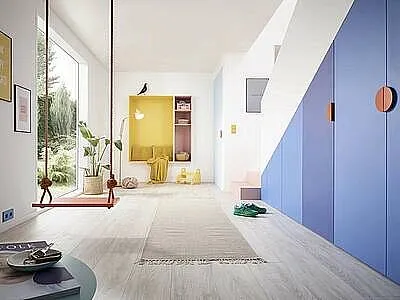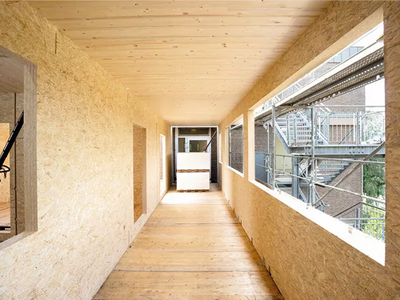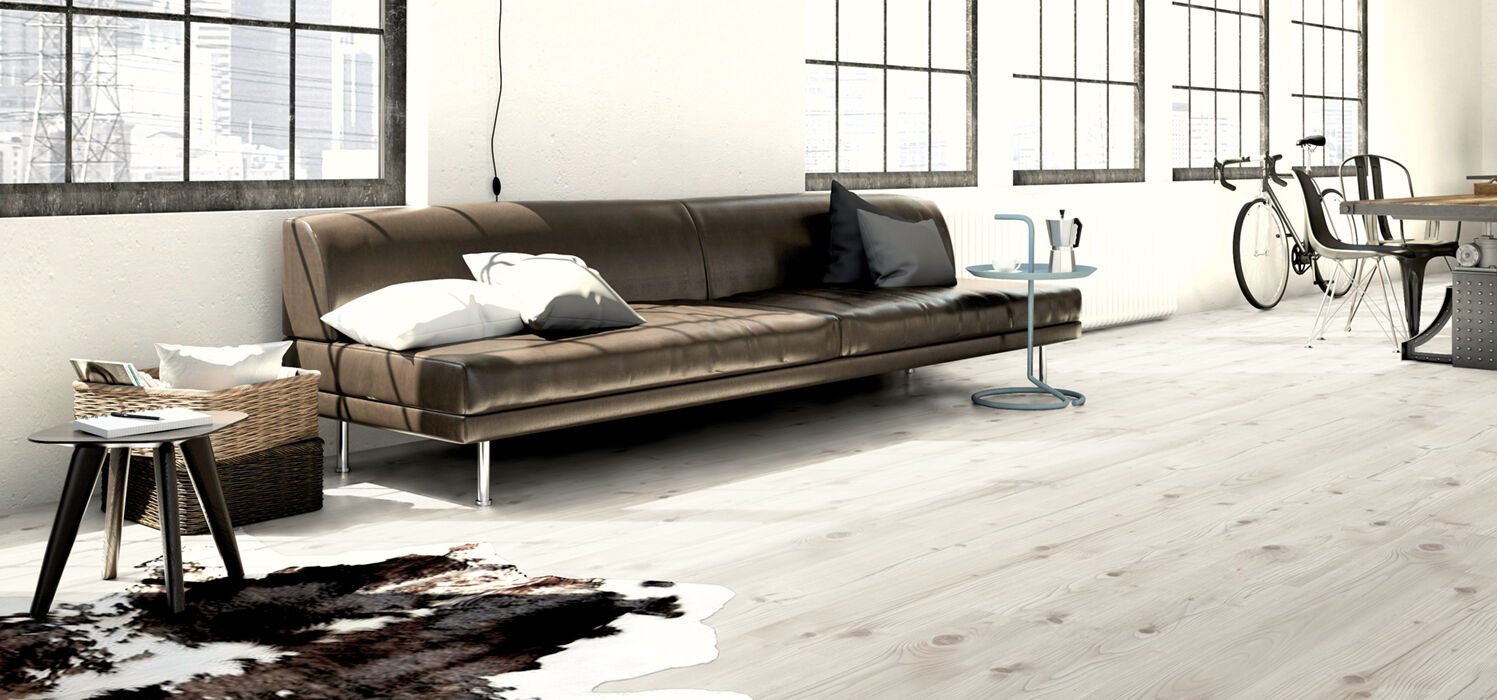The ‘Can I Install Laminate Flooring Over This?’ Guide

We’re listing alphabetically all of the flooring types available so that you can easily determinewhether you can install laminate over that specific flooring type. Remember that laminate flooring, like Swiss Krono USA’s Laminate Wood Flooring, is a floating floor — it will expand and contract as temperature and other conditions change. This means that the choice of subfloor (i.e., what you install laminate over) needs to provide the right support.
- Bamboo: Not recommended.
- Brick: No. Even with a brick floor in excellent condition, there is the potential for too much surface deviance that could stress the laminate-flooring locking system. And if the floor is below grade, moisture migration will be too difficult to control.
- Carpeting, tufted: No. Carpet, its padding, and all its staples must be completely removed — down to the subfloor — before you install laminate flooring.
- Carpeting, commercial or needle-bond: No. Some types and styles of commercial or “indoor/outdoor” carpeting may look harmless, but it and any adhesive used to glue it down must be removed before installing a laminate floor.
- Carpet tiles: No. Everything has to go. Only the subfloor may remain when you install laminate.
- Ceramic tiles: Yes, provided the surface of the floor is flat and level (per our laminate subfloor specifications) and the condition of the floor is good. The tiles themselves must be smooth. You must use padding. Check for cracked or loose tiles and grout — these could be signs of a poor floor condition caused by settling that could cause problems for your laminate floor.
- Concrete slab (above grade): Yes. An above-grade concrete floor will most likely be in a commercial building. If that’s the case and you’re not the building owner, you’d better check first. If the building is new construction, the concrete must be completely cured for a minimum of 90 days before installation. We would still recommend a 6-mil vapor barrier and, of course, underlayment padding before installing laminate flooring.
- Concrete-slab (below grade): Yes, but be careful. These are usually found in residential basements, and you must be careful about moisture migration from the ground through the concrete. We recommend several ways to test this and steps you can take to control it. And, the concrete must be completely cured a minimum of 90 days. You must use a 6-mil vapor barrier and, of course, underlayment padding. Drains of any kind, French or otherwise, are clear indicators that this concrete floor is not acceptable for laminate installation.
- Cork: Yes. But just because it’s a cork floor doesn’t mean you can skip the underlayment. You’ll still need that before installing your laminate floor.
- Dirt: No.
- Engineered wood: Not recommended under floating floors.
- Hardwood: Yes. Keep in mind that in many older homes (40 to 50 or more years old) the planks may be in poor condition, warped, etc. Examine carefully. Inconsistencies in levelness and flatness of the floor surface could create stress points for locking joints and that will cause problems later on.
- Laminate: Not recommended under floating floors. Instead, take up all of the old laminate flooring. You may reuse the underlayment for your new floor, provided it’s in good shape.
- Linoleum: Yes, provided the surface is flat and level (per our subfloor specifications) and the condition of the floor is good. You must use padding.
- LVT Floor (tiles or planks): Yes. The surface must be flat and level (per our subfloor specifications) and the condition of the floor good. You must use padding. Some LVT products are floating systems or “loose-lay” and are easy to remove (preferable). If the floor is glued down, be sure you remove all of the adhesive before installing laminate flooring.
- Natural stone (marble, travertine, etc.): It depends. if completely smooth and above ground, then yes; if textured or rough, no.
- Outdoor floors, porches, patios or decking of any kind: Never. Laminate flooring is indoor flooring for controlled environments.
- OSB floor: Yes. Oriented Strand Board is sometimes used as a subfloor in construction. As with all subfloors, it must meet laminate flooring specifications.
- Plywood: Yes. Plywood is most-often used as a subfloor in construction. As with all subfloors, it must meet laminate installation specifications.
- Porcelain tile: Yes. The surface of the floor must be flat and level (per our subfloor specifications) and the condition of the floor good. The tiles themselves must be smooth. You must use padding. Check for cracked or loose tiles and grout — these could be signs of a poor floor condition caused by settling which could cause problems for your laminate floor, too.
- Saltillo tile: No. Saltillo tile is beautiful, but it’s a bit soft compared to ceramic and porcelain and porous because no glaze is fired onto it. True Saltillo tile also has animal footprints and an uneven surface. You don’t want to install laminate over it.
- Sheet-vinyl: Yes, provided the surface is flat and level (per our subfloor specifications) and the condition of the floor is good. You must use padding when installing laminate flooring over sheet vinyl.
When you’re ready to buy laminate wood flooring, visit our SWISS KRONO flooring line. We have different floors that are moisture resistant; their lifetime warranty protects for spills that can sit for up to 24-hours. Plus we have plenty of other flooring options ranging from 12mm thick with a lifetime warranty to 7mm thick and a 15-year warranty.







